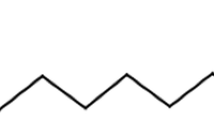Summary
Isolated rat liver gap junctions were split by two methods. In the first method, isolated gap junctions were stabilized by cross-linking their cytoplasmic surfaces with glutaraldehyde under conditions that prevented the entry of glutaraldehyde into the “gap” region. The “stabilized” junctions were then split in the junctional gap with SDS. In the second procedure, unfixed gap junctions were split by incubation in ureacontaining solutions. Junctional splitting was monitored by electron microscopy of thin sectioned and freeze fractured membrane pellets. Sidedness of the split junctional membranes was defined by labeling their cytoplasmic surfaces with glutaraldehyde-activated ferritin before splitting with urea. Gap junctional splitting did not result in any loss of protein components as determined by SDS-gel electrophoresis. The glutaraldehyde cross-linking procedure was also used to determine the effects of various detergents on the protein-protein interactions in the “gap” region. Of the detergents tested, only SDS caused junctional splitting.
Similar content being viewed by others
References
Avrameas, S., Ternynck, T. 1969. The cross-linking of proteins with glutaraldehyde and its use for the preparation of immunosorbents.Immunochemistry 6:53–66
Baker, T.S., Caspar, D.L.D., Hollingshead, C.J., Goodenough, D.A. 1983. Gap junction structures: IV. Assymetric features revealed by low-irradiation microscopy.J. Cell Biol. 96:204–216
Culvenor, J.G., Evans, W.H. 1977. Preparation of hepatic gap (communicating) junctions. Identification of the constituent polypeptide subunits.Biochem. J. 168:475–481
Ehrhart, J.C. 1981. Further purification of mouse liver gap junctions with deoxycholate and protein composition.Cell Biol. Int. Rep. 5:1055–1061
Fallon, R.F., Goodenough, D.A. 1981. Five-hour half-life of mouse liver gap junction protein.J. Cell Biol. 90:521–526
Finbow, M., Yancey, S.B., Johnson, R., Revel, J.-P. 1980. Independent lines of evidence suggesting a major gap junctional protein with a molecular weight of 26,000.Proc. Natl.Acad. Sci. USA 77:970–974
Fisher, K.A., Stoeckenius, W. 1977. Freeze-fractured purple membrane particles: Protein content.Science 197:72–74
Goodenough, D.A., Gilula, N.B. 1974. The splitting of hepatocyte gap junctions and zonulae occludentes with hypertonic disaccharides.J. Cell Biol. 61:575–590
Helenius, A., Simons, K. 1975. Solubilization of membranes by detergents.Biochim. Biophys. Acta 415:29–79
Henderson, D., Eibl, H., Weber, K. 1979. Structure and biochemistry of mouse hepatic gap junctionsJ. Mol. Biol. 132:193–218
Hertzberg, E.L. 1980. Biochemical and immunological approaches to the study of gap junctional communication.In Vitro 16:1057–1067
Hertzberg, E.L., Anderson, D.J., Friedlander, M., Gilula, N.B. 1982. Comparative analysis of the major polypeptides from liver gap junctions and lens fiber junctions.J. Cell Biol. 92:53–59
Hertzberg, E.L., Gilula, N.B. 1979. Isolation and characterization of gap junctions from rat liver.J. Biol. Chem. 254:2138–2147
Hertzberg, E.L., Gilula, N.B. 1982. Liver gap junctions and lens fiber junctions: Comparative analysis and calmodulin interaction.Cold Spring Harbor Symp. Quant. Biol. 46:639–645
Hirokawa, N., Heuser, J. 1982. The inside and outside of gap junction membranes visualized by deep etching.Cell 30:395–406
Kensler, R.W., Goodenough, D.A. 1980. Isolation of mouse myocardial gap junctions.J. Cell Biol. 86:755–764
Kishida, Y., Olsen, B.R., Berg, R.A., Prockop, D.J. 1975. Two improved methods for preparing ferritin-protein conjugates for electron microscopy.J. Cell Biol. 64:331–339
Laemmli, U.K. 1970. Cleavage of structural proteins during the assembly of the head of bacteriophage T4.Nature 227:680–686
Loewenstein, W.R. 1981. Junctional intercellular communication: The cell-to-cell membrane channel.Physiol. Rev. 61:829–912
Makowski, L.D., Caspar, L.D., Goodenough, D.A., Phillips, W.C. 1982. Gap junction structures: III. The effect of variations in the isolation procedures.Biophys. J. 37:189–191
Manjunath, C.K., Goings, G.E., Page, E. 1982a. Isolation and protein composition of gap junctions from rabbit hearts.Biochem. J. 205:189–194
Manjunath, C.K., Goings, G.E., Page, E. 1982b. Protein composition of cardiac gap junctions: Comparison between mammalian species and between junctions from rat heart and liver.J. Cell Biol. 95:88a
Manjunath, C.K., Goings, G.E., Page, E. 1983. Detergent sensitivity and splitting of isolated rat liver and heart gap junctions.J. Cell. Biol. (abstr.) (in press)
Nicholson, B.J., Hunkapiller, M.W., Grim, L.B., Hood, L.E., Revel, J.-P. 1981. Rat liver gap junction protein: Properties and partial sequence.Proc. Natl. Acad. Sci. USA 78:7594–7598
Nicholson, B.J., Takemoto, L.J., Hunkapiller, M.W., Hood, L.E., Revel, J.-P. 1983. Differences between liver gap junction protein and lens MIP 26 from rat: Implications for tissue specificity of gap junctions.Cell 32:967–978
Page, E., Karrison, T., Upshaw-Earley, J. 1983. Freeze fractured cardiac gap junctions: Structural analysis by three methods.Am. J. Physiol. 244:H525-H539
Peracchia, C. 1980. Structural correlates of gap junctional permeation.Int. Rev. Cytol. 66:81–146
Shibata, Y., Manjunath C.K.1981. A technique for freeze fracturing minute amounts of isolated cardiac membrane.Am. J. Physiol. 241:H891-H893
Takemoto, L.J., Hansen, J.S.1981. Gap junctions from the lens: Purification and characterization by chemical crosslinking reagent.Biochem. Biophys. Res. Commun. 99:324–331
Zampighi, G., Unwin, P.N.T. 1979. Two forms of isolated gap junctions.J. Mol. Biol. 135:451–464
Author information
Authors and Affiliations
Rights and permissions
About this article
Cite this article
Manjunath, C.K., Goings, G.E. & Page, E. Detergent sensitivity and splitting of isolated liver gap junctions. J. Membrain Biol. 78, 147–155 (1984). https://doi.org/10.1007/BF01869201
Received:
Revised:
Issue Date:
DOI: https://doi.org/10.1007/BF01869201




